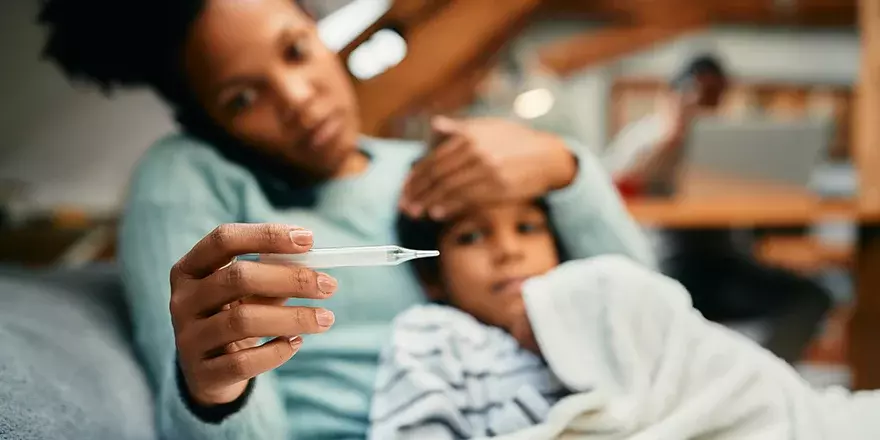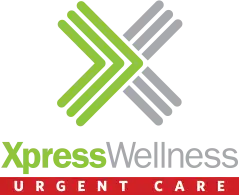There is a teenage mental health crisis in the United States. You’ve probably seen it all over the news, or maybe you’ve experienced it firsthand. Teens today face challenges previous generations couldn’t imagine. The intersection of social media and mental health has changed how teens relate to their peers and the world. When you layer on the Covid-19 pandemic’s impact on their development, it’s not too mysterious why teen mental health has declined.
So, what can we do to help? If you’re a parent or loved one of a teen, what warning signs of mental health crisis should you look for? Multiple factors contribute to the decline of mental health in teenagers. Listed below are facts related to mental health in teens and mental health resources for those in need.
Teen Mental Health Facts and Statistics
According to What You Need to Know About Youth Suicide | NAMI: National Alliance on Mental Illness, suicidal thoughts are common among teens and young adults. The teen mental health statistics are staggering. You probably know a handful of teens who have experienced suicidal thoughts or attempted suicide.
- 11% of young adults (ages 18-25) report that they’ve had serious thoughts about suicide
- About 1–2% of young adults (ages 18-25) report a suicide attempt during the prior year
- Among high school students–nearly 20% report serious thoughts about suicide
- Among high school students 9% report a suicide attempt
- Among young adults (15-24 years old) in the U.S., the rate of death by suicide in 2019 was about 14 per 100,000 people
That means, among those aged 15-24, there was slightly higher than one suicide for every 10,000 people in this age group For this age group, suicide is sadly one of the top three causes of death.
Some populations are at a higher risk for suicide. Populations with an elevated risk of youth suicide are:
- American Indian/Alaska Native youth
- LGBTQ youth living in rural communities
According to the Substance Abuse and Mental Health Services Administration (SAMHSA), suicide was the second leading cause of death among American Indian and Alaska Native youth aged 8-24 in 2019. In addition, LGBTQ youth have a higher rate of suicidal ideation than their straight peers. However, the suicide rate of youth has increased dramatically over the last few years for most demographics – not just those with higher rates of incidents.
What Are the Risk Factors For Youth Suicide?
If you are thinking about the teens in your life, it is helpful to know the risk factors for youth suicide. Risk factors can differ with age, gender, or ethnic group. They can change over time too, and most teens won’t show all of these.
- Prior suicide attempt(s)
- Mental disorders and depression
- Substance abuse (drug abuse, alcohol abuse or other disorders)
- Family history of suicide
- History of family violence including physical or sexual abuse
- Exposure to the suicidal behavior of others (specifically peers or family members)
- Firearms in the home
- Incarceration
In addition to the risk factors listed above, you should know some of the warning signs of youth mental health illness. Common signs to look for that indicate teenage mental health illness or crisis:
- Talking about wanting to die, hopelessness, feeling trapped, feeling like they are a burden
- Showing severe agitation, aggression and recklessness
- Isolating themselves from friends and family
- Noticeable changes in sleep, energy level, motivation and/or appetite
If you’re worried about your teenager, they are expressing signs of a mental health crisis (their emotions, thoughts and behaviors are causing distress), and they are not in immediate danger, the best thing you can do is to find a licensed mental health care provider. Xpress Wellness Behavioral Health provides teen mental health counseling in Oklahoma in-person and online. Please contact us to schedule an appointment.
If your child’s life or someone else’s life is in danger, this is an emergency. Take immediate action by calling 911 or going to your nearest emergency room. You must take immediate action. Under no circumstances should you leave them alone.
Teens, Mental Health and Substance Use
Some of the biggest mental health challenges for youth include reaching a mental health diagnosis and substance abuse. According to data collected from the CDC, between 2016-2019, about 8.7% of children ages 3-17 years old were diagnosed with ADHD. About 7.8% of this age group had a current anxiety diagnosis, and 7% had a behavioral problem diagnosis. Depression affected about 3.4% of surveyed children ages.
The quality of mental health in a child affects how well they handle stress, relate to others, and make healthy choices. It is helpful for children and youth to receive mental health care and related diagnoses early in life to ensure they are supported in their teen years.
According to the National Institute of Mental Health, mental disorders can contribute to substance use and substance use disorders. About 4% of kids ages 12 to 17 reported having a substance use disorder in the past year, according to CDC data collected in 2018-2019.
As you think about your child’s mental health, it’s helpful to consider it holistically. If they have previously been diagnosed with a mental health or behavioral health disorder, maybe working with a licensed counselor can help them in their teen years as they face new challenges.
Positivity and Resources
Behavioral indicators of a child’s mental health include curiosity, affection, positivity, resilience, and self-control. here are mental health resources available to teens to help navigate their needs and help change or improve their behaviors. These resources include both websites as well as apps for teens. Below are a few mental health resources that might be helpful.
- Go Ask Alice!: Geared at young adults, this question-and-answer website contains a large database of questions about a variety of concerns surrounding emotional health.
- Girls Health.Gov: The “Your Feelings” section of this website offers guidance to teenage girls on recognizing a mental health problem, getting help, and talking to parents.
- Jed Foundation: By promoting emotional health and preventing suicide among college students, this website provides an online resource center, ULifeline, a public dialogue forum, Half of Us, and Transition Year, resources and tools to help students transition to college.
- Kelty Mental Health Resource Center: Reference sheets are provided that list top websites, books, videos, toolkits and support for mental health disorders.
- Reach Out: This website provides information on specific mental health disorders, as well as resources to help teens make safe plans when feeling suicidal and helpful tips on how to relax.
- Teens Health: Providing a safe place for teens who need honest and accurate information, this website provides resources on mental health issues.
- Teen Mental Health: Geared towards teenagers, this website provides learning tools on various mental illnesses, videos, and resources for friends.
- Mindfulness for Teens: This website has resources to help teens use mindfulness to handle stress and includes apps to practice meditation and guided mediation recordings.
- Strength of Us: An online community designed to inspire young adults impacted by mental health issues to think positively, stay strong and achieve goals through peer support and resource sharing.
Talking to teenagers about their mental and emotional health is so important. Normalizing discussions about how they feel, think and behave can open doors for them to ask for help if they experience a mental health crisis. The Xpress Wellness Behavioral Health team is also trained to work with teens and parents to navigate behavioral health and mental health challenges. Reach out to begin meeting with a therapist in Oklahoma.
Navigating emotional health is important and can be complex, especially for teens. In a crisis, teenagers must know they are loved, have a purpose and that help is available for their mental health crisis. The teenager Ella Phillips couldn’t have said it any better than she did in her beautiful poem, “For All Those People.”
For All Those People
This is for all those people
Who hide in the dark,
For those who feel hopeless,
For those with a broken heart.
This is for every child and teen
Who is trying to flee from their fears,
For those who cry themselves to sleep,
For those who drown in their tears.
This is for people who hide their scars
Upon their wrists and their thighs.
I want to remind each of you
There is a reason you’re alive.
You are here for a purpose;
You are needed in this place.
You are special, you are beautiful.
It doesn’t matter what size, gender, or race.
You are perfect just the way you are.
You are priceless, a wonderful new.
You are dearly treasured by many.
There is no one more important than you.
Published by Family Friend Poems May 2016 with permission of the author.
Ella Phillips. “For All Those People.” Family Friend Poems, May 2016.





